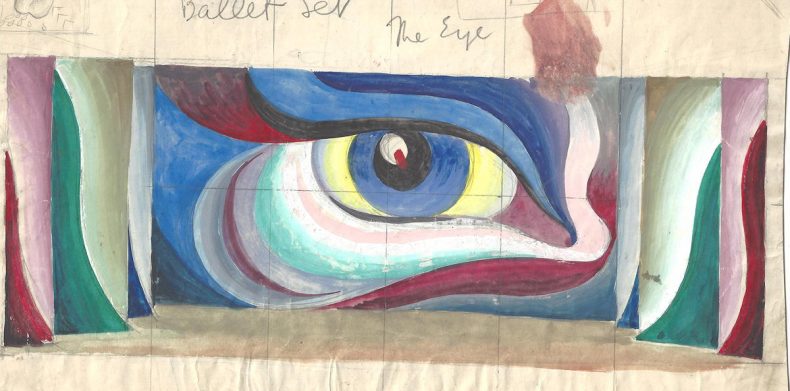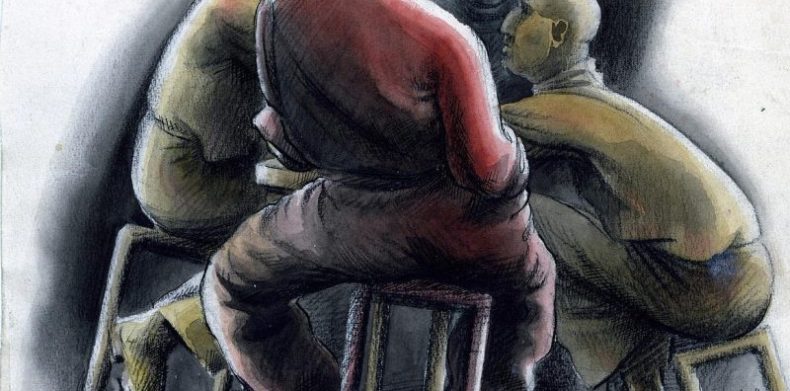Peter Peel – Cpl – British Army
Having been conscripted in November 1939 Peter Peel joined the 2nd Battalion York & Lancaster Regiment at Pontefract barracks.
Following Basic training e was then posted in early 1940 to join his regiment in the Middle East via France, but got caught up in the German advance west and escaped back to the UK from Cherbourg. Eventually he joined his regiment by sea, serving on coastal defence duties near Alexandria, Egypt. From there he took part in the Crete landings, and was again on coastal defence duties until the German invasion in 1941 when he was slightly wounded and captured. His journey to Central European captivity ended at Stalag VIIIB in Silesia, a huge marshalling camp supplying prisoners to numerous work places in the Sudetenland.
Peter was sent to a quarry as a labourer but deliberately wrenched his ankle as an excuse to return to the camp. He gained an interview with a Regimental Sergeant Major in charge of all camp activities for prisoners awaiting despatch to Arbeitsplätze, (workplace).
These activities included a 600 student school with 43 tutors, a 500 seater theatre, a symphony orchestra and dance band and international football, cricket and athletics, which were encouraged by the Germans as good publicity for Red Cross inspections. Peter Peel’s educational background helped secure him staff jobs as teacher of English and Art in school, designer and painter of theatre sets and actor in the Repertory Company. Peter played Sebastian in ‘Twelfth Night’ (opposite the late Denholm Elliot who played Viola), Macduff in ‘Macbeth’, and Freddie in ‘Pygmalion’ with Elliot as Eliza! The theatre group made all their own props, costumes and scenery, except for the costumes for ‘Twelfth Night’ which came from costumiers at Red Cross expense.
The Germans were so impressed with the Shakespeare that they arranged a tour to other large Stalags for ‘Twelfth Night’ complete with scenery!
As well as his involvement in the theatre, he became a keen card player and he and a friend soon became known as ‘players’, amassing a ‘camp fortune’ which consisted of various goodies from the Red Cross and private parcels. He also put his talent to practical use when he was recruited by the Escape Committee to forge symbols, signatures, display lettering for letter-headings, tickets, passes and travel permits.
To cap what he describes as an “absorbing five years”, Peter was able to study for, sit and pass his professional intermediate exams via the Red Cross. After he was demobbed he passed his professional finals gaining the qualifications MCIM, MAA and MIPA and became Creative Director of the then largest Advertising Agency in the North East.
During his years at Stalag VIIIB, this soldier was permitted to send sketches and photographs back to England. The photographs include Denholm Elliott and all the VIIIB tutors in the Stalag school. The Centre is delighted to have been loaned and to preserve Peter’s artwork and photographs alongside his tape-recorded interview. His artwork beautifully exemplifies the fact that artistic creativity could sometimes flourish under conditions of captivity.
His artistic skills were also utilised in making forged ID documents for would be escapees. In late 1944 he and many others from the camp were force marched to the West finishing up near Buchenwald.
He was liberated by American troops and repatriated to the UK for eventual demob.

Group photograph from one of the theatre productions, set designer, Peter Peel, pictured on the back row, far left

Prisoners from Stalag VIIIB – in the Quarry where they worked Peter Peel is pictured with hat and pipe, third from the left standing

The cast of ‘Twelfth Night’. The set designer, Peter Peel (third from the left on the front row), played Sebastian opposite the later celebrated actor, Denholm Elliott (front row, centre) who played Viola
Tap gallery image for larger size.
Peter’s Second World War artwork features in the second issue of the Centre’s Journal:Everyone’s War: Issue 2
Transcript of Audio Clip
Asked by Peter Liddle about Denholm Elliott, Peter Peel goes on to talk about activities in the
camp and the possibilities for escape:
He was just a Private in the camp, as I was, yes. But because of his acting ability he
didn’t go out on working parties, he was kept in by the sheriffs or the organisation like
I was and I got all these jobs and I was doing all this work and so on, teaching in the
school, painting and designing all the sets, costumes, playing in some of the
productions, all sorts of things you see and then I was in the escape committee or
whatever they called themselves, there was forging documents. . . so my stay in Stalag
was justified as being useful and the Germans allowed this sort of thing -they didn’t
know about the escape committee but they allowed the symphony orchestra, the
theatre and the school and so on – they were proud of these things and when the
inspectors came from Switzerland they would show us off, all this business you see, as
though “aren’t we wonderful?” you know “what a marvellous time these prisoners are
having with every opportunity to further their education and to occupy their minds and
so on”. But I was extremely busy and never had a dull moment because I was writing a
book as well at the same time on reproduction, printing reproduction and I had my
name down as a volunteer to escape which I liked to do on the one hand, which I
wanted to do, but on the other hand I never worried about it because I had plenty of
other things to occupy my mind and eventually it was explained to me that there were
very rigid priorities and at this time in the camp the priorities were airmen, particularly
pilots and navigators and they were the only people who were given the chance
actually to escape through these tunnels that were built and so I had to content myself
with forging documents.
Inventory of the Donation
• Various Photographs
• Tape-recorded
• original artwork – including set designs for POW camp productions













